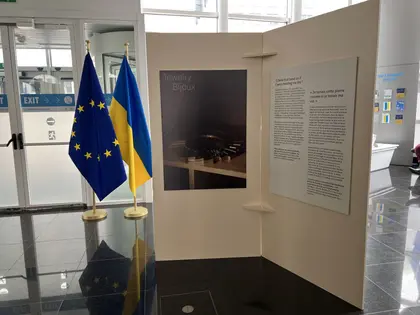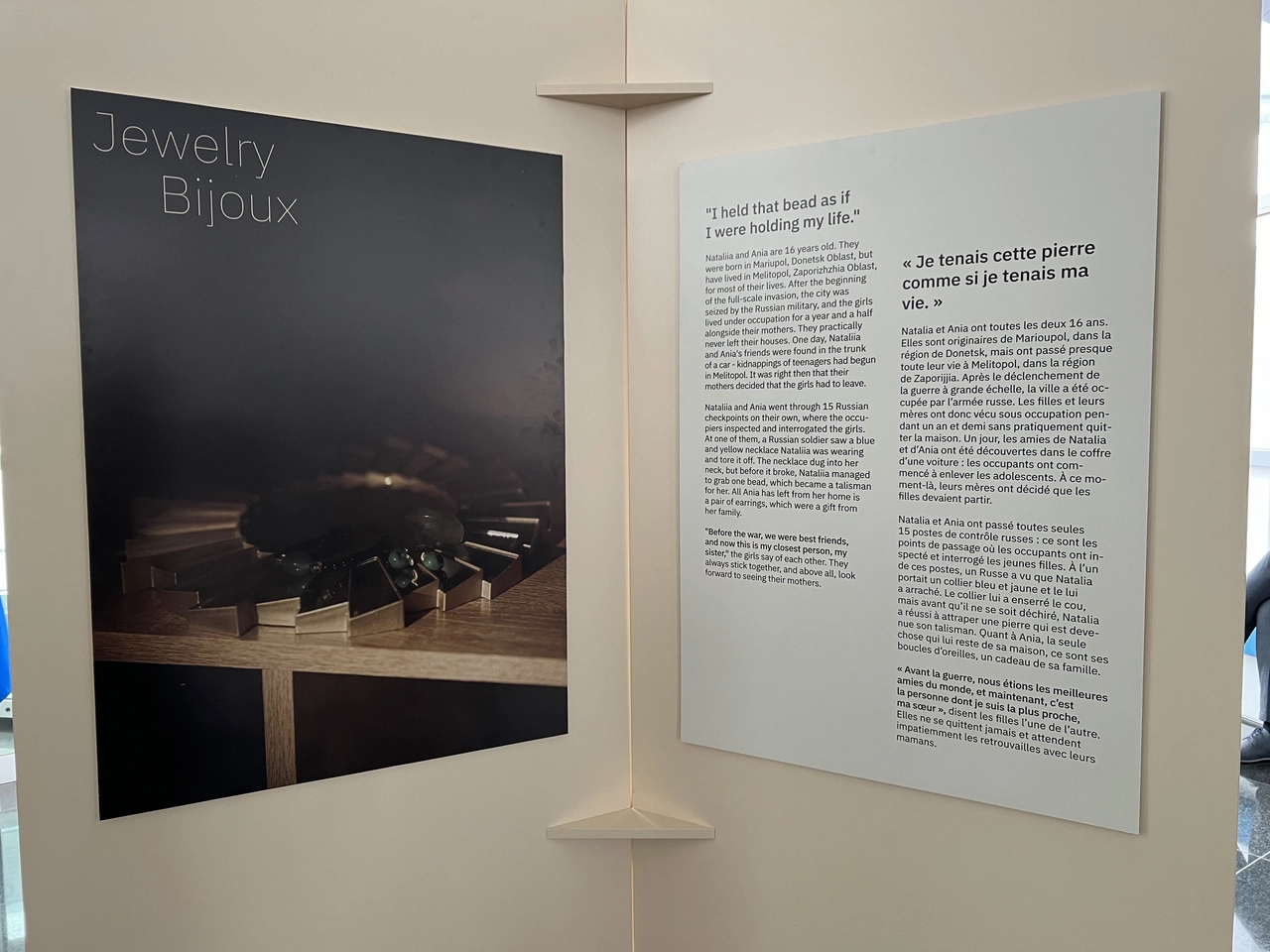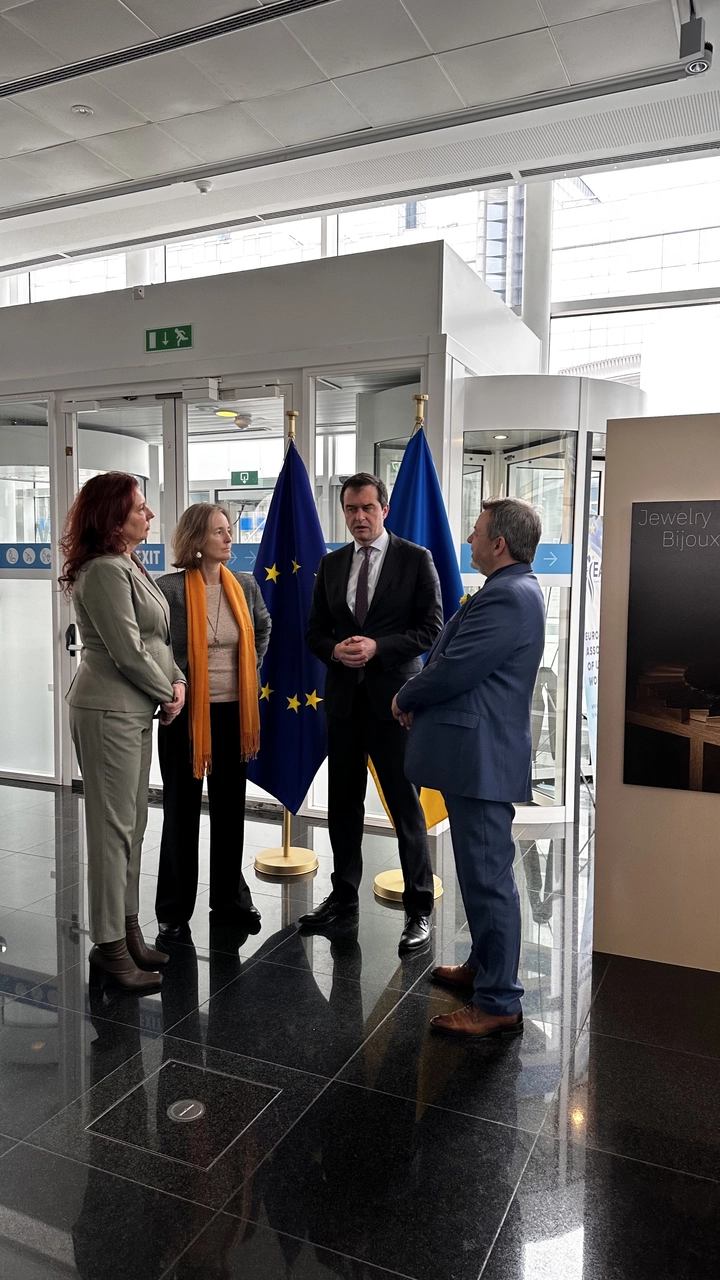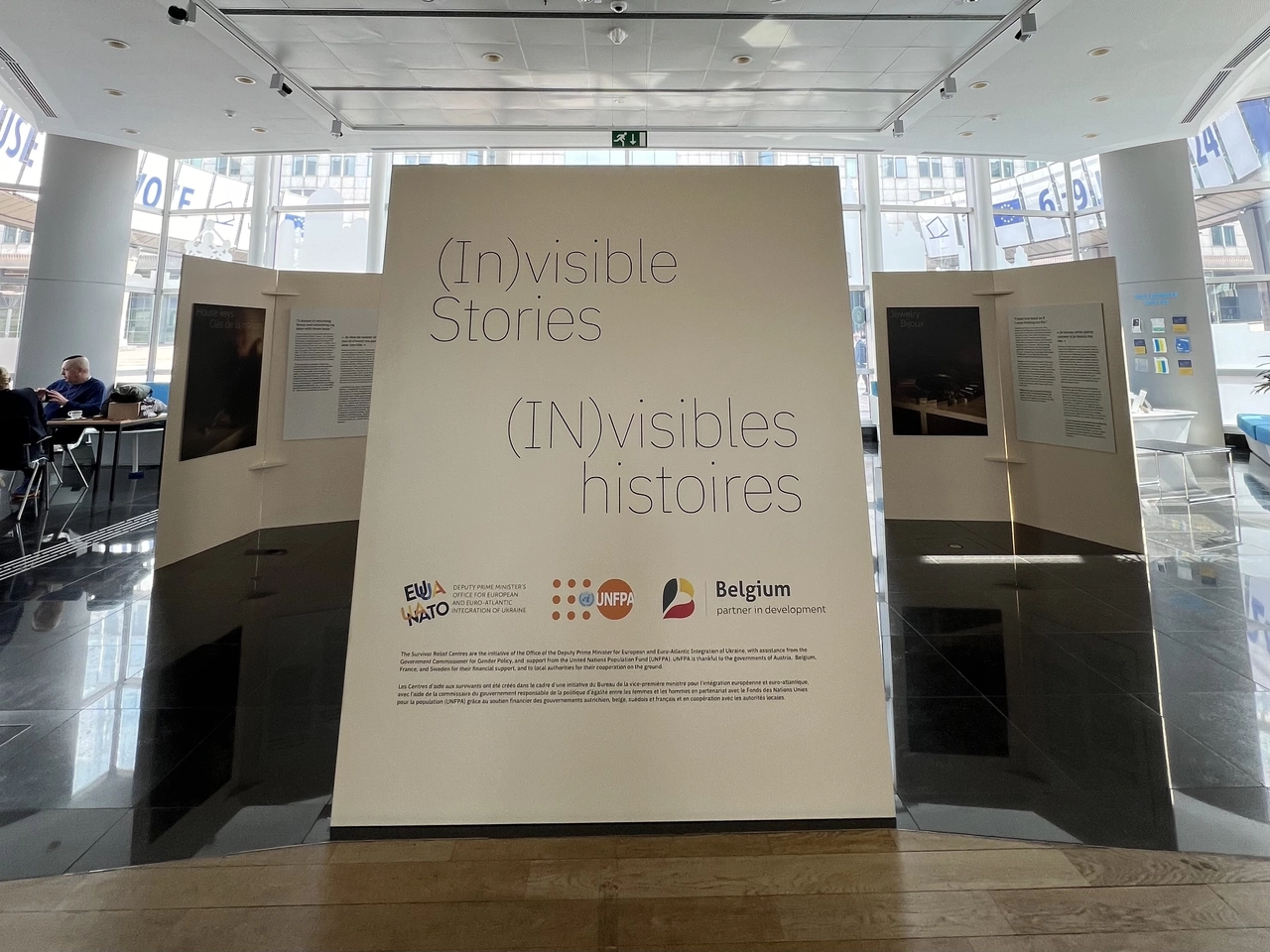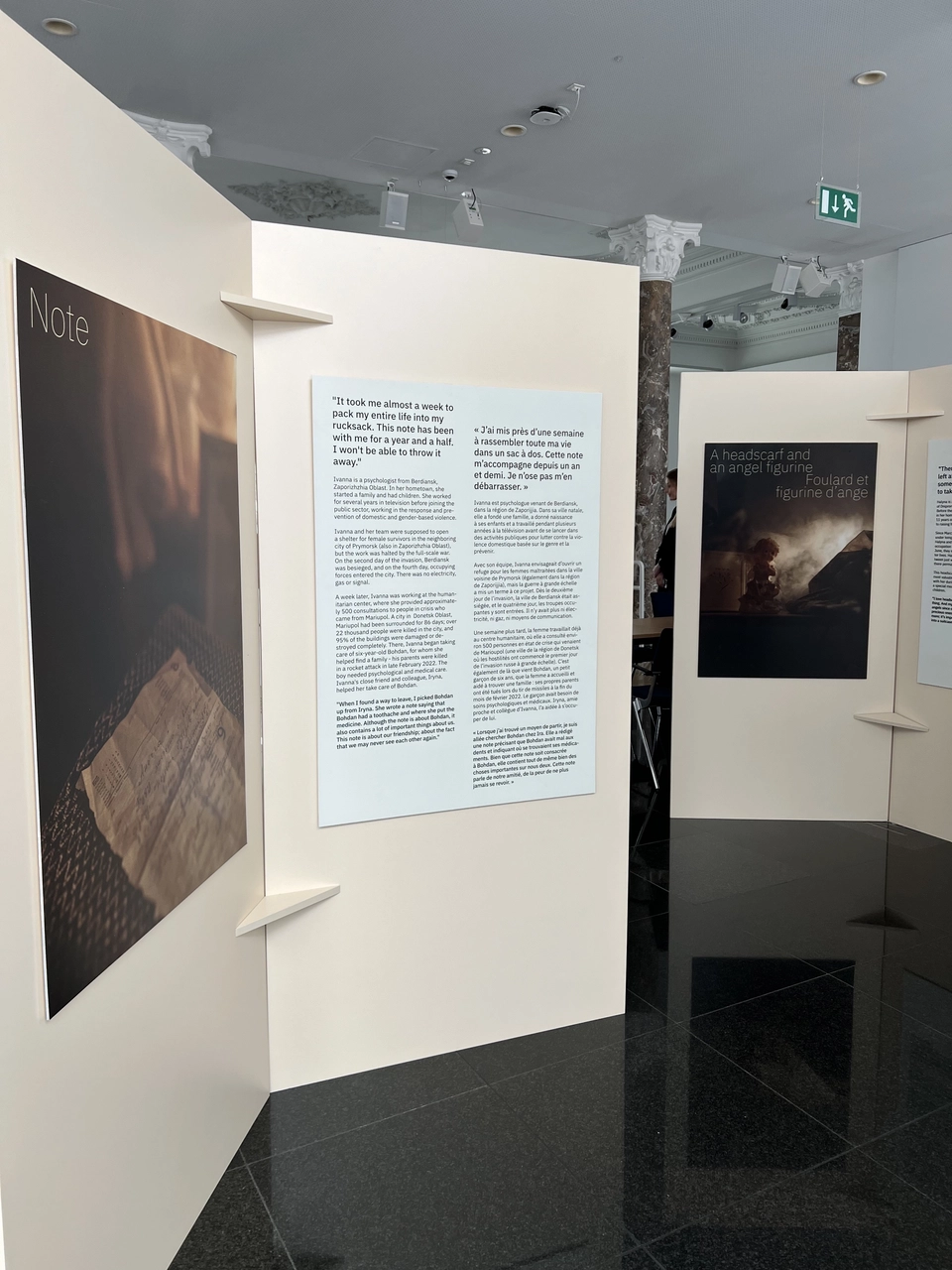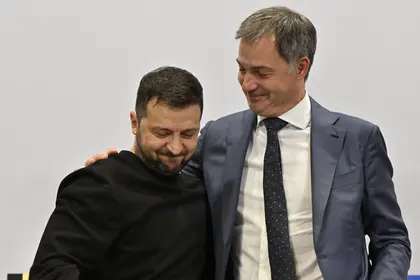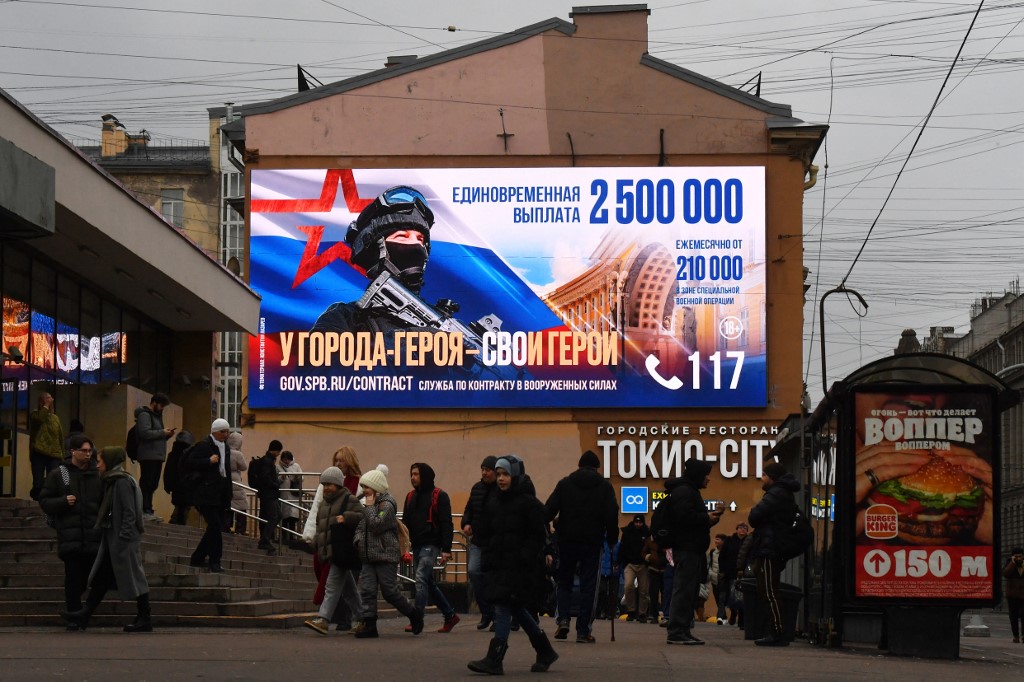The accounts of Ukrainians who fled their homes under fire, who witnessed friends’ kidnappings, and who endured abuse and torture under Russian occupation are being told at an exhibit in Belgium.
The exhibition, presented by the United Nations Population Fund (UNFPA) at Brussels’ Place du Luxembourg, revealed the stories of nine people displaced by Russia’s full-scale invasion.
JOIN US ON TELEGRAM
Follow our coverage of the war on the @Kyivpost_official.
It includes stories like that of two 16-year-olds – Nataliia and Ania – who had, alongside their mothers, barely left their homes for a year and a half under Russian occupation.
When kidnappings of teenagers had begun in their hometown of Melitopol – like that of the girls’ friends, who were found in the trunk of a car – their mothers determined it was time to find a way out.
Accounts like theirs are complemented by photos of the most valuable things survivors managed to take from home: a hat and scarf knitted under occupation, a piece of jewelry nearly destroyed by the Russians at a checkpoint, a note from a close friend still living under occupation, and more.
The United Nations High Commissioner for Refugees estimates that more than 3.7 million people in Ukraine have so far lost their homes in Russia’s full-scale invasion of its neighbor.

British Defence Intelligence Update Ukraine 7 February 2025
Among those who came to see the exhibition were Florence Bauer, UNFPA Regional Director for Eastern Europe and Central Asia, Massimo Diana, UNFPA Representative in Ukraine, and Vsevolod Chentsov, Ukraine’s representative to the EU.
“It is necessary to continue to inform the world in various ways about what is happening in Ukraine because of the Russian invasion, to talk about the war crimes committed by the occupiers,” Chentsov said.
“This exhibition is a powerful tool that allows us to tell through stories and memories what Ukrainians are going through every day, and to urge Europeans to support Ukraine in our quest for justice and freedom.”
One of the subjects of the exhibition, Valentyna, said that three days before the start of Russia’s full-scale invasion, she could already hear explosions on the outskirts of her hometown of Mariupol, which has since been devastated by Russian bombings.
“But that morning [Feb. 24, 2022] I couldn't believe it, I sent my son to school. We moved to our daughter's house in another part of the city, but it was even scarier there,” Valentyna said.
“We shared two loaves of bread among ten people, and my daughter tried to get me medication through her friends so I could continue chemotherapy. One day we woke up to a mine hitting the corner of the building. When my family and I decided to leave, I believed it would be for 2-3 days. But on the drive out, I saw my city as I could never have imagined it.”
All the people featured in the exhibition – whose names have been changed – received and continue to receive support from Survivor Relief Centers, which are supported by UNFPA and operate in 12 Ukrainian regions.
While visiting the exhibition, guests can scan a QR code and visit the website to learn more about the centers’ work and how they can support internally displaced Ukrainians.
The exhibition is open to all visitors until April 25 at Brussels, Place du Luxembourg, Station Europe, Ukrainian Civil Society Hub.
You can also highlight the text and press Ctrl + Enter


